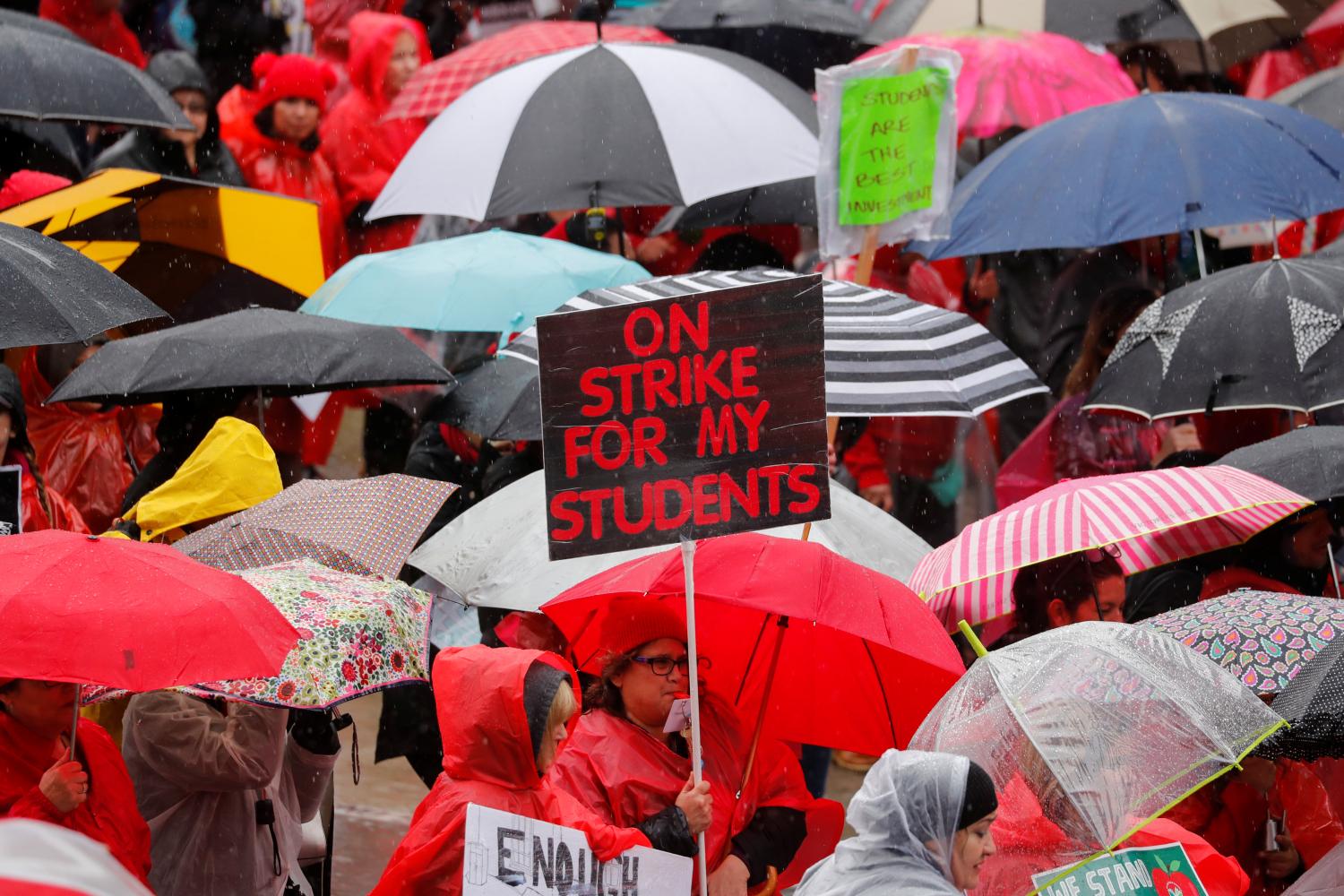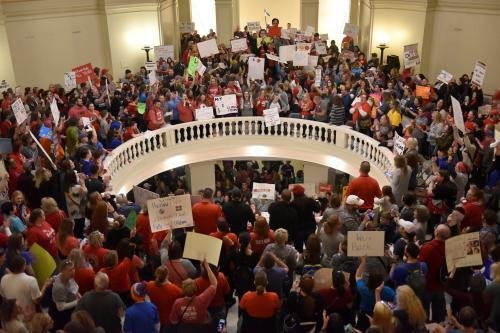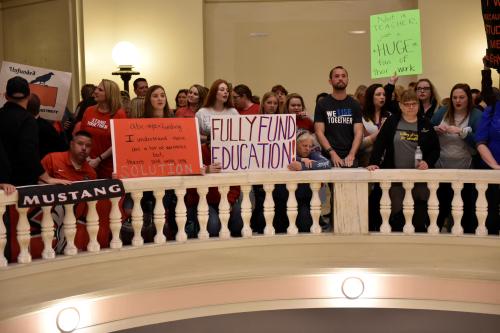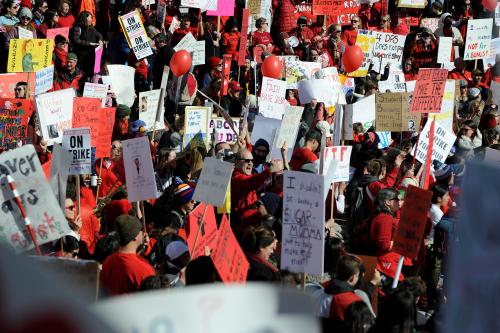After months of an impasse in negotiations over a new labor contract, teachers in the Los Angeles Unified School District (LAUSD) this Monday reported to picket lines rather than the classroom. This strike, the first in 30 years for the nation’s second-largest school district, takes on added significance as it follows last year’s spring of discontent, where we saw large-scale teacher strikes and protests in a number of states.
Those following these developments may ask: Is this strike a continuation of the wave that originated out of West Virginia last year? And will it prompt more teacher actions, expanding the map even further?
In this piece, I contrast what we’re seeing on the ground in LAUSD with the events of last spring. Taking the number of differences into account, my conclusion is that the Los Angeles teachers’ strike marks a return to typical collective bargaining processes, rather than a resurgence of a teachers’ spring.
State versus local actions
While the crowd size of the LAUSD strike rivals many of the actions we saw last spring, it is important to highlight that this is still a local action. The strike is targeted at leaders in district offices in the hopes of securing the terms of a district labor contract (and other policies related to class size and support staff in the district). The fact that it has been 20-plus months since there has been an effective agreement between LA’s teachers’ union and school district is enough of a cause for the situation to come to an impasse. Contrast this with 2018’s teacher actions, though, where actions crossed district boundaries and prompted teachers to flock to state capitol buildings to prompt elected officials to take statewide actions.
Union versus grassroots organization
The political context and its implications for union power is another point of divergence. California’s status as a reliably blue state is an obvious difference against last year’s actions that occurred in primarily red states. Though the partisan lean of a state is not directly important here, the labor laws are—and red states often have comparatively weaker labor laws (e.g., many right-to-work states) that undermine union strength. With generally weak union leadership in these states, most of the teacher actions last spring saw unions taking their cues from grassroots organizers like #Red4ED. Even the first teachers’ strike in West Virginia last spring, which was mediated through the state union, continued several days as a wildcat strike after union representatives ordered teachers back to the classroom. The strike in LAUSD, however, is the ultimate step of teacher dissatisfaction in a typical union-represented, collective-bargaining process.
Pile-on issues
The actions of both this year and last are not simply about pay—as teachers have made other demands—yet those other demands look different in LA in comparison to those of last year. Last year, teachers frequently advocated for a general increase in school funding and rethinking how states were using tax revenue to invest in schools. Contrast this with LAUSD, where teachers have concerns about class sizes, over-testing, and the growing presence of charter schools—all of which are more typical union positions.
Riding a wave of public sentiment
It would be disingenuous to say that these are entirely unrelated strikes. The teacher activism of last year was widely reported on, raising awareness about the plight of educators in many states nationwide. Multiple surveys of parents and the public at large showed robust support for raising teacher pay following the string of teacher actions last spring. The #Red4ED movement has been a presence both in LA and in other cities showing solidarity over the walkout.
The wave of public sentiment is not confined to the coast. Teachers in Denver are also mulling over a strike there, with robust public support. Earlier this past fall, Seattle narrowly averted a teacher strike and several districts in Washington state saw walkouts. Yet, my sense is that each of these new strike sites and the ongoing one in LAUSD are qualitatively different kinds of actions compared to what we witnessed last spring. In fact, according to numbers from Education Week, the U.S. has averaged about 10 teacher strikes per year at the district level since 2010—state-level strikes are much less common.
In other words, last year’s protests were an unprecedented teacher uprising, and this year’s mark a return to normal.
Grace Breazeale contributed to this post.
The Brookings Institution is committed to quality, independence, and impact.
We are supported by a diverse array of funders. In line with our values and policies, each Brookings publication represents the sole views of its author(s).








